BC Curriculum Connections
Grade: 1
Subject: English Language Arts (1)
Big Idea: Playing with language helps us discover how language works.
Curricular Competencies: Read fluently at grade level, Communicate using letters and words and applying some conventions of Canadian spelling, grammar, and punctuation
Content:
Strategies and processes: reading strategies, oral language strategies, and writing processes.
Language features, structures, and conventions: concepts of print, print awareness, phonemic and phonological awareness, letter formation, sentence structure, and conventions.
Lesson / Activities
*This list of activities was inspired from a UFLI (phonics) lesson I observed, how the lesson went & in the order it went
Sounds + actions: As a whole group students and the teacher did sounds and actions to “th” (fast), “th” (slow) and “ch” – these are the sounds and compounds students are working on.
Word Work: Students began word work at their desks using their blending boards – the teacher asks them to spell out words using their letter blocks and changes only a few letters in the word until the short activity is done (e.g., chat -> chap -> cap -> tap -> tip.) *The teacher has a blending board under the document camera as well so students can refer to it throughout the activity .
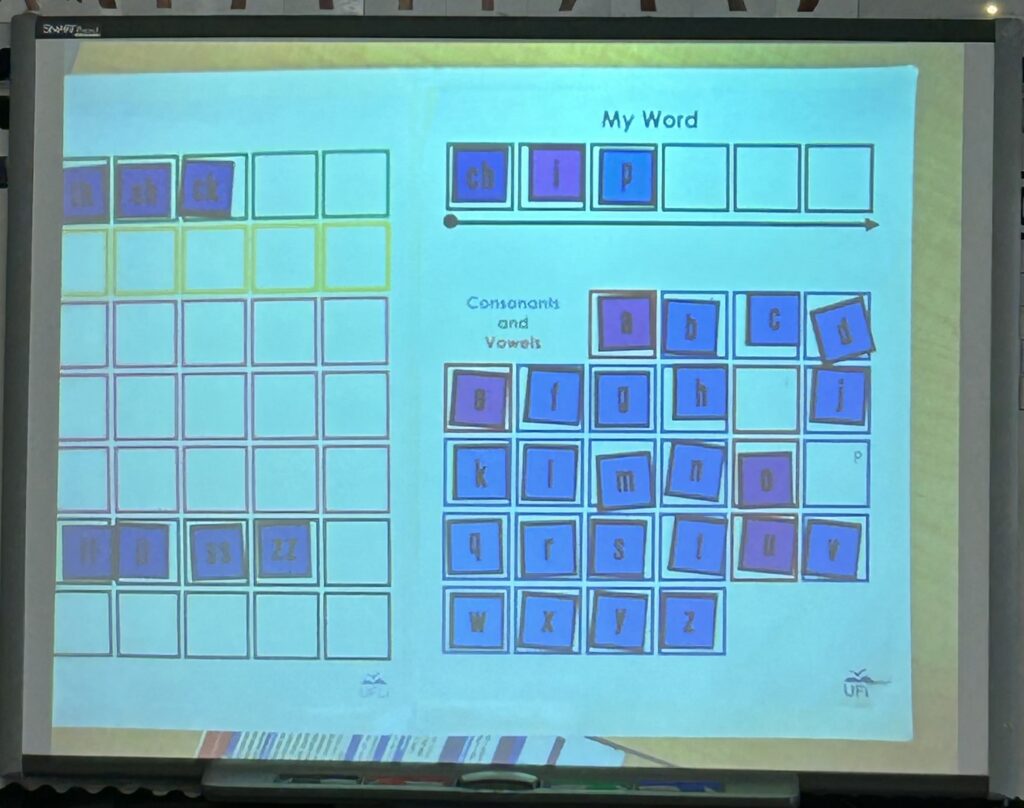
Irregular Words: As a class they went over irregular words on the white board. Irregular words are words that cannot be decoded easily. As a class they said them out loud then, “decoded” the words by saying the “regular” parts of the word which is indicated by the “ ” symbol as well as the parts they need to “learn by heart” which is shown with the “ ” symbol.
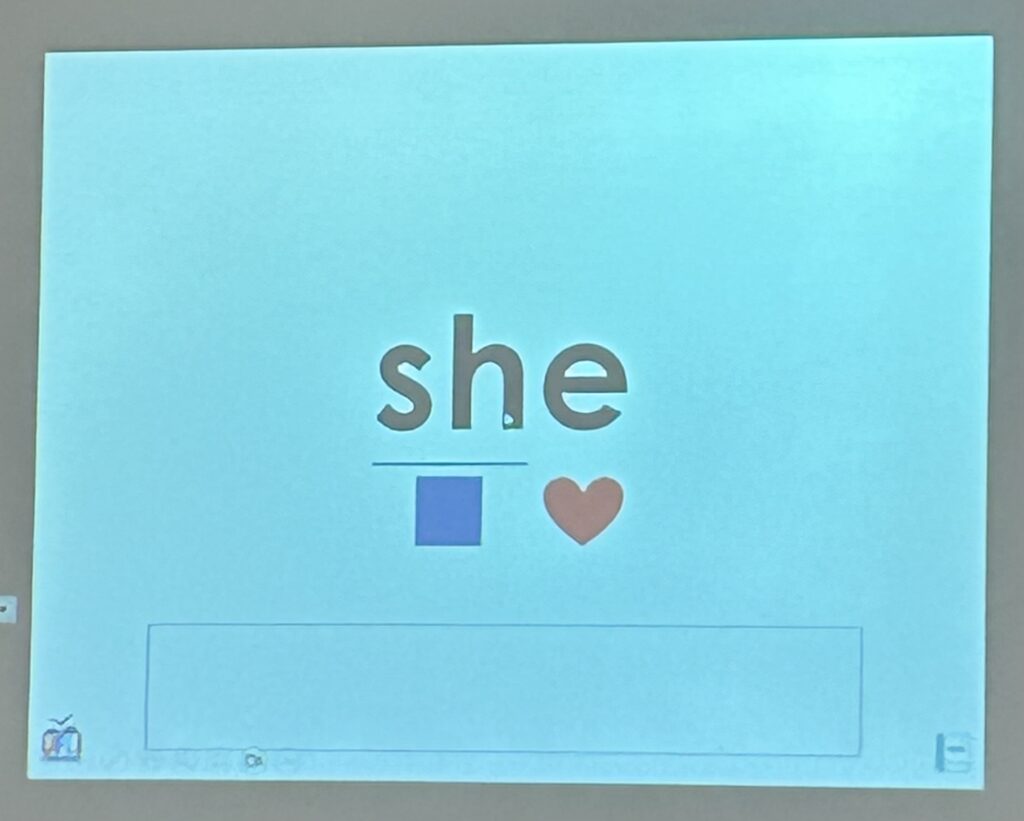
Songs: The teacher also added in songs (not part of the UFLI program) to help students further their understanding of how to say them and spell them properly. The website that was used had great videos that showed the students exactly how it was spelt, actions and catchy tunes to help them remember!
Writing Words: Students got their white boards out and spelt the words the teacher was saying (e.g., “can you spell the word “so”, spell the word “the”, spell the word “you” etc.)
Review of “Schwa” words: The teacher made sure to address the words we say “relaxed” which is called “schwa” – for example in the English language we say “d” like “duh” not just the “d” sound and same with “a” we say it as “ah” not just “a.” So, the teacher made sure to address this so students are learning the proper way of phonics not the “relaxed” way.
Let’s read together: All together the class read out sentences that had words in it that they were focusing on (e.g., Chuck and Beth had lunch.) I like the idea of students having the chance to just read sentences instead of sentences with pictures as I believe it will help them strengthen their understanding of the meaning of the sentence. Additionally, the teacher made sure to go over C.A.P.S for their sentence, “do all the words that need capitals have capitals? is the appearance of the sentence correct? (finger spaces between letters, written left to right etc) does the sentence have proper punctuation? are all the words spelt correctly?“
Let’s spell together: the teacher prompts the students with a sentence and asks them to spell it out, word for word. As the students are writing it out she is also writing it alongside them on the smart board. I really like that the teacher puts circles for the amount of words in the sentence and checks them off as they go. Additionally, they also use the C.A.P.S method to make sure the sentence is a proper sentence.
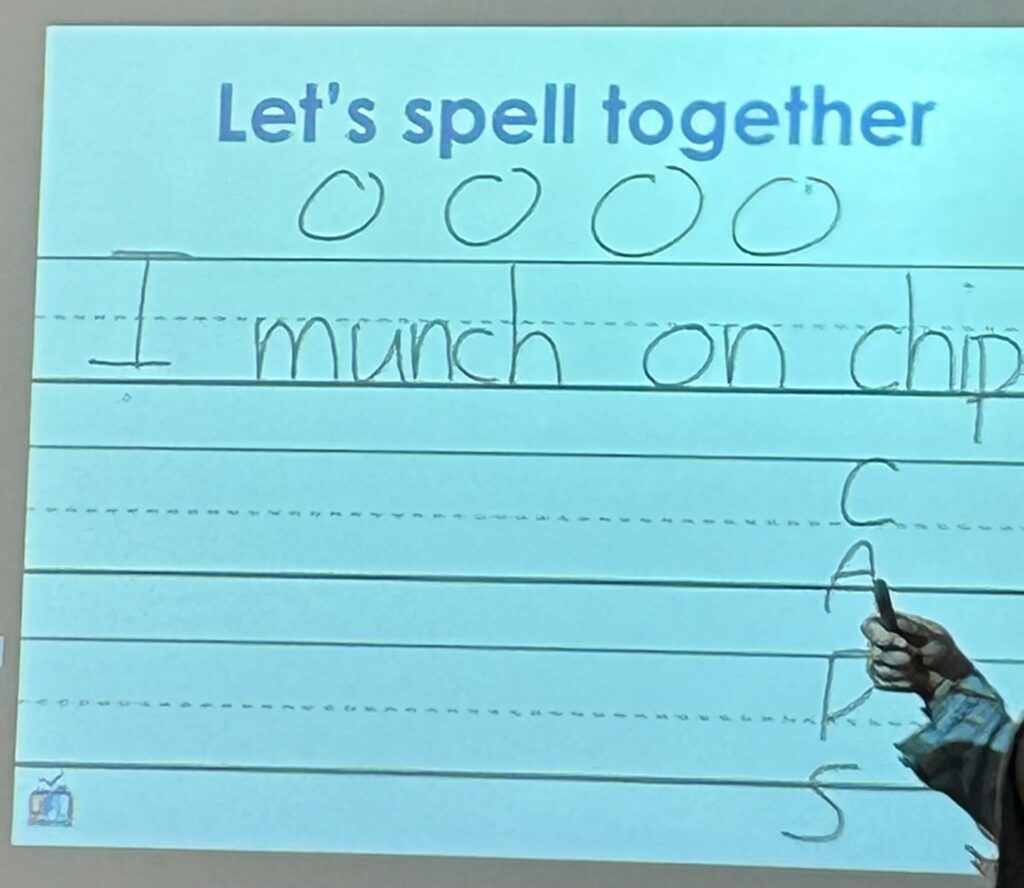
Decodable text / “Rockin’ Reader”: Students come back to the carpet space and read “decodable” texts that are presented on the smart board – after students have read the sentences all together the teacher chooses a “rockin reader” and they get a little slip of paper that says they won “rockin reader” that gets put in their folder then they get to pick a prize, either a sticker or a “desk pet” which is a little eraser.
Student groups / centers: The teacher has preplanned groups (4 groups of 4) based on the students literacy ability, this is done so the teacher can focus on the “lower” levelled groups as often as needed. The students rotate between four different groups; 1 – teacher “lesson,” they focus on phonics and to get additional support if they are struggling with understand the UFLI lessons, they also work in their “UFLI Check In Booklet” (photo presented below) 2 – phonics game, 3 – another game related to the content, and 4 – either levelled reading or another game related to literacy. The students rotate between all of the centers so they each get a chance to participate at each of them. The centers usually last about 5-8ish minutes.
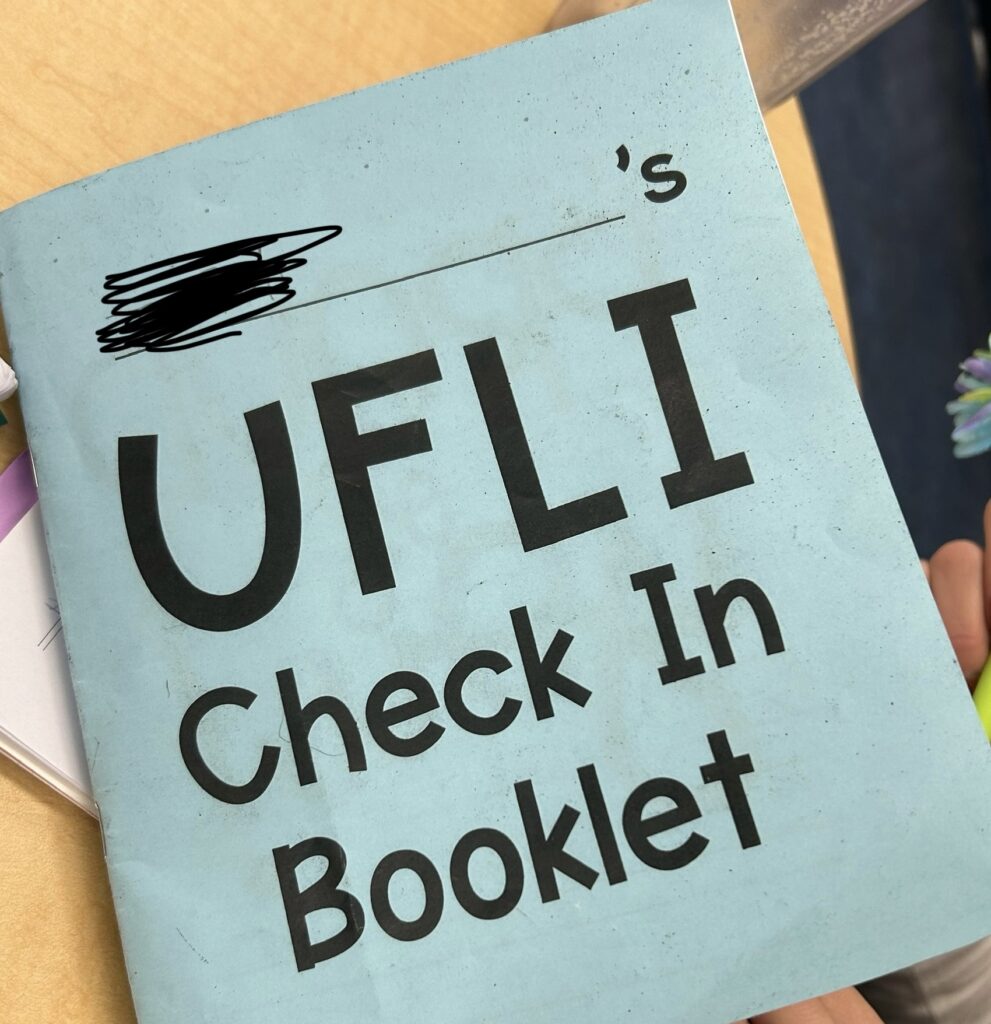
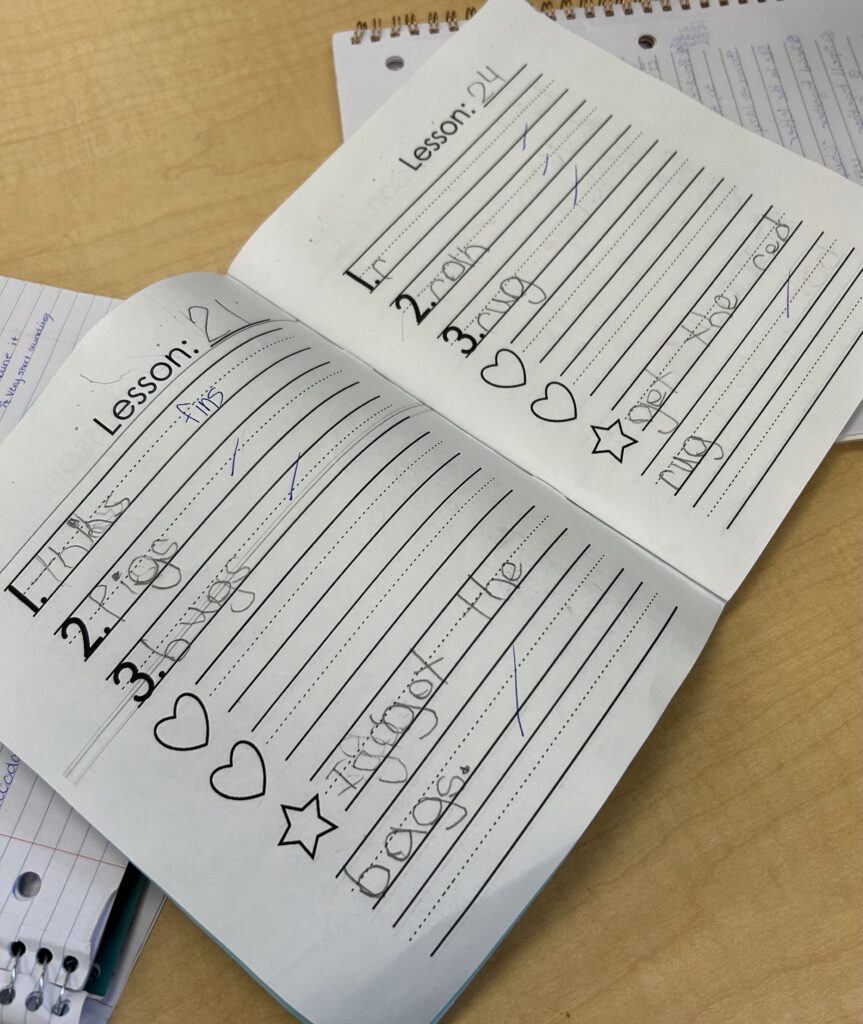

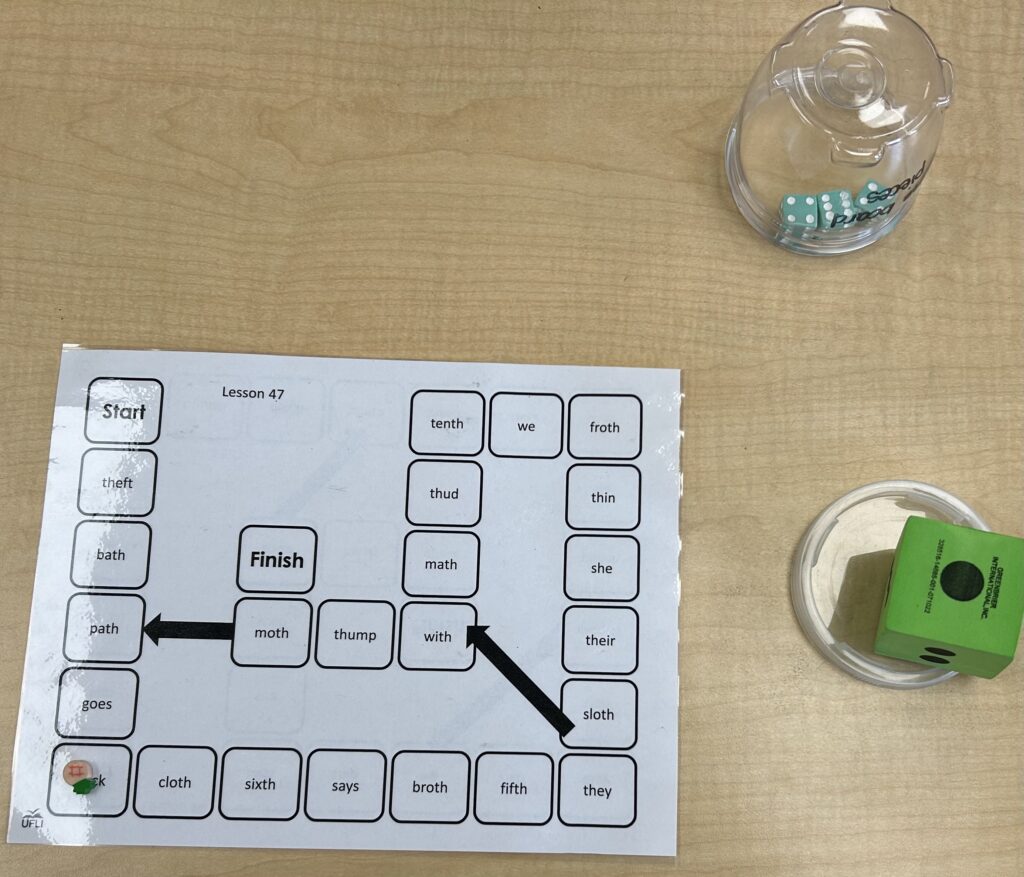
*This game is also part of the UFLI lesson – each lesson has a set of games that correspond with the lesson.*
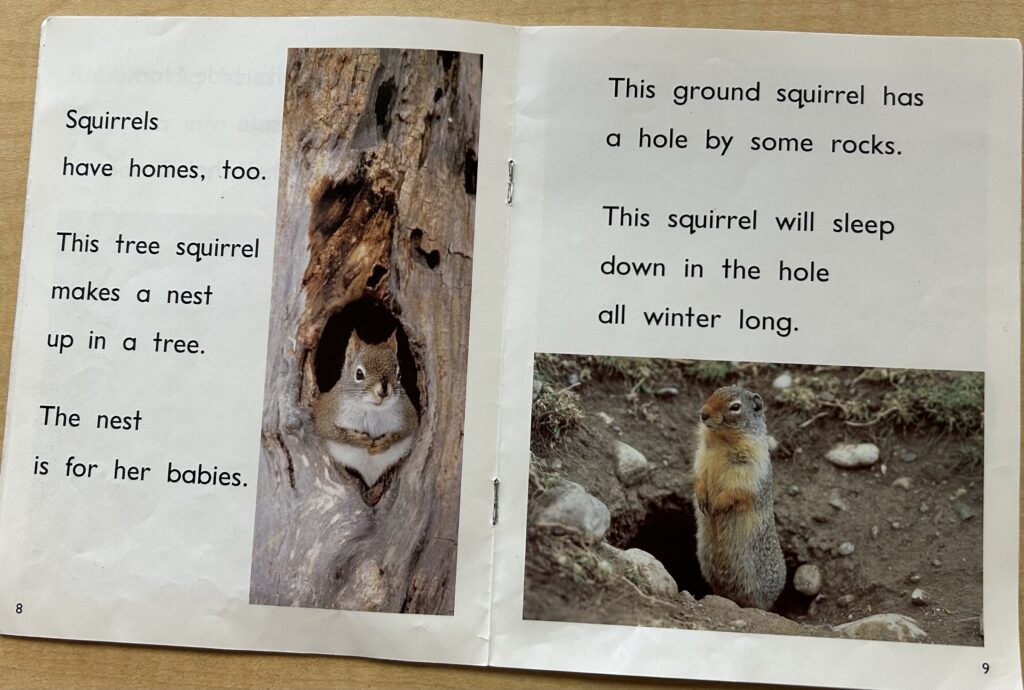
Personal Reflection
I absolutely loved my time spend in the “ ” classroom! I learnt so much from the classroom teacher as she made time to sit down with us to discuss what she was doing in detail, how it is going with the students, what is working and what is not etc. She also provided us with a lot of resources and insights on what we can look forward to and what is working for her that she recommends we try out in our future classrooms! Being able to participate and walk around while an actual lesson is taking place was extremely beneficial as I got to see in real time how to do activities / lessons like the ones explained above and how the students respond to said lessons. Additionally, watching these activities showed me the importance of having students move a lot during a lesson, having different elements to keep them engaged as well as letting the students do the learning by constantly talking not just the teacher talking. All in all I am very thankful that I got to observe the “ ” classroom and am excited to see different literacy lessons take place in the following classrooms.
Leave a Reply
You must be logged in to post a comment.